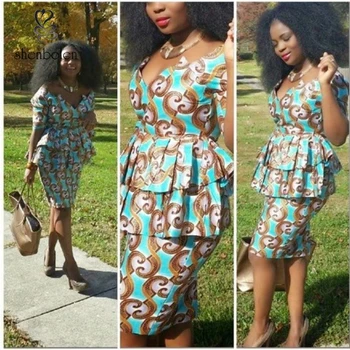[ad_1]
Sustainable alternatives to the conventional fashion market
:
Second-Hand Shops in the Siebengebirge turn Old into New
;)
You can find beautiful pieces for little money at Bedarfshilfe in Königswinter. The selection is very large .
Foto: Frank Homann
Königswinter/Bad Honnef Second-hand shops in the Siebengebirge offer a sustainable and environmentally friendly alternative to the conventional fashion market. There are several shops in Königswinter and Bad Honnef.
Fast fashion is a huge problem. In this business model, clothes are produced very quickly, in line with trends and, above all, cheaply. Vast amounts of water are consumed in the process and polluted with many toxic chemicals. The clothing industry has the fourth highest impact on climate and environmental pollution worldwide and the third highest impact on water and land use. The Second-Hand trade sees itself as a factor in the fight against climate change: Daniela Kaminski from the industry association „Second-Hand vernetzt“ explains that there is already “a greater openness and naturalness” towards the issue. The General-Anzeiger took a look around Second-Hand shops in the Siebengebirge.
The topic has entered the public discourse more strongly and Second-Hand goods are increasingly seen as a resource, Kaminski finds. Because it is clear: at the latest since the Fridays For Future debate, the question of climate and environmental protection has become anchored in everyday life. The demand for consumer goods is growing and more and more online retailers are jumping on the sustainability bandwagon. But mail order generates a lot of emissions. The ultimate solution: second-hand shops in the region.
Second-hand shops in the region
And these are numerous and varied. In the old town of Königswinter alone, there are six Second-Hand shops. There are two more in Bad Honnef and three more in the districts of Königswinter. Young people in particular are increasingly seeking out the second-hand shops. Hedwig Jaschke, head of the Bedarfshilfe gGmbH, reports: “We definitely notice that more young people are coming. But even apart from the young people, we have a stable clientele who are attracted by the low prices and the sustainability of the clothes.” Two Euros – that’s how much each item of clothing costs – children’s clothing only one Euro. In the total of four Bedarfshilfe shops in Königswinter’s pedestrian zone, you can find books, furniture and household items as well as treasures, such as a wedding dress or a last-minute Christmas tree stand on Christmas Eve.
The items come from household liquidations carried out by the Bedarfshilfe. Instead of throwing away things that are still in good condition, Hedwig Jaschke gives them a new life in her shops.
Shops breathe new life into old clothes
Giving special items of clothing a new lease of life is also the concern of owner Nadja Finke of the “Glücksbringer” second-hand shop in Bad Honnef’s pedestrian zone. With the help of stylish advice, customers can dress themselves in valuable goods that make you almost forget they are second-hand at all. Customers have a similar shopping experience in the newly opened shop “Three Eighty Nine – The Style Treasury” in Königswinter’s old town. Owner Yvonne Hamacher made the decision to make people happy with good second-hand clothes while cleaning out their wardrobes in the pandemic. For her, the sustainability aspect is the highest priority: “I notice that so many customers are excited about the idea. Some only recognise my shop as second-hand at second glance and are totally taken with it – instead of turning their backs on the shop straight away.”
You can do double good with a purchase in the second-hand shop of the AWO “JAcke Wie HOse” in Bad Honnef. The profits are donated to kindergartens or projects. Rosemarie Schopp, chairperson of AWO Bad Honnef, unlike Hedwig Jaschke from Bedarfshilfe gGmbH, does not report an increase in sales. “The change in thinking is there, but more paying customers do not automatically come,” says Schopp. People in need would shop for free at the AWO.
Many reasons to buy Second-Hand goods
The main motives for buying second-hand clothes are the price-performance ratio, the originality of the clothes and sustainable consumption, explains Daniela Kaminski. Mathilde Andrássy, a 19-year-old student and regular customer of the Bedarfshilfe, agrees: “It is very important to me to consume less and, above all, more selectively. In second-hand shops there are so many high-quality things that you can afford for little money,” explains Andrássy. “This also makes the clothes much more durable than the polyester clothes from the fast-fashion industry. And you don’t have to buy new things as often,” says the 19-year-old. No matter what the motive for buying, second-hand is always a good alternative to the conventional fashion market.
Background: Ten per cent of annual CO2 emissions are caused by the fast fashion industry alone. At the same time, the production of clothing, which is harmful in many respects, doubled in the period from 2000 to 2014. According to Greenpeace, 200 billion tonnes of clothing were produced in 2020 – 40 billion tonnes of which have not even been sold. Added to this are the inhumane working conditions, pollution from microplastics and the waste problem of “disposable goods”. In the zeitgeist of climate and environmental protection, this industry should actually not grow any further, says Kaminski. But wholesalers like the Chinese fashion brand SheIn, which produce cheap goods with a short survival period, advertise the latest designs and low prices.
To further boost the trade in second-hand goods, the industry association “Second-Hand vernetzt” has started a petition to remove VAT on second-hand goods. The petition and further information can be found at change.org.
Original text: Kai Fenja Horstmann
Translation: Mareike Graepel
[ad_2]
Source link





More Stories
Style Sensible
Starting A Jewelry Enterprise
900 Stylish & Inexpensive Styles